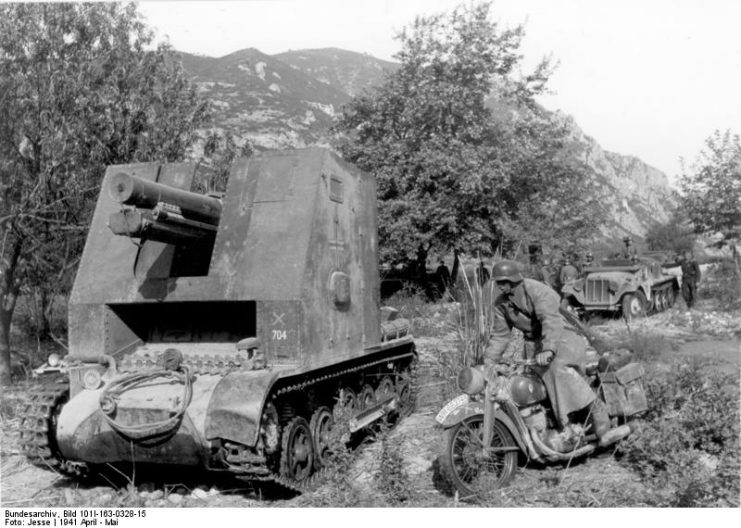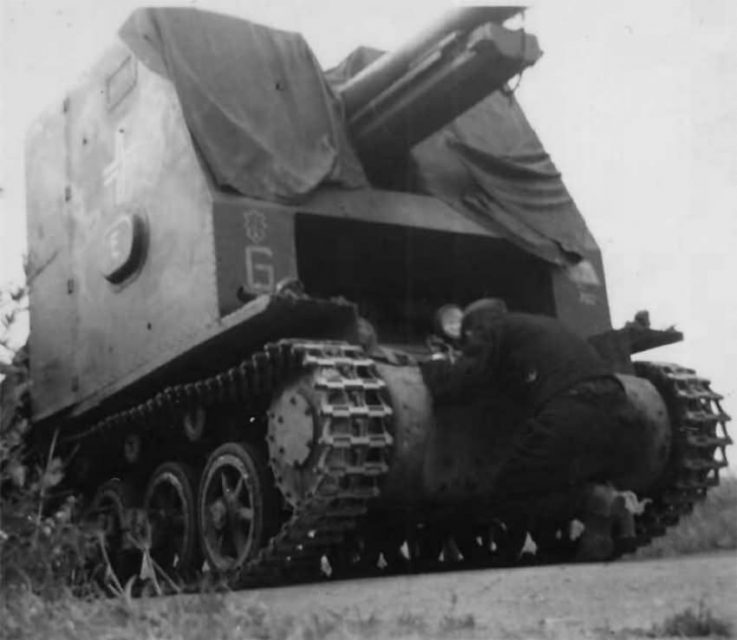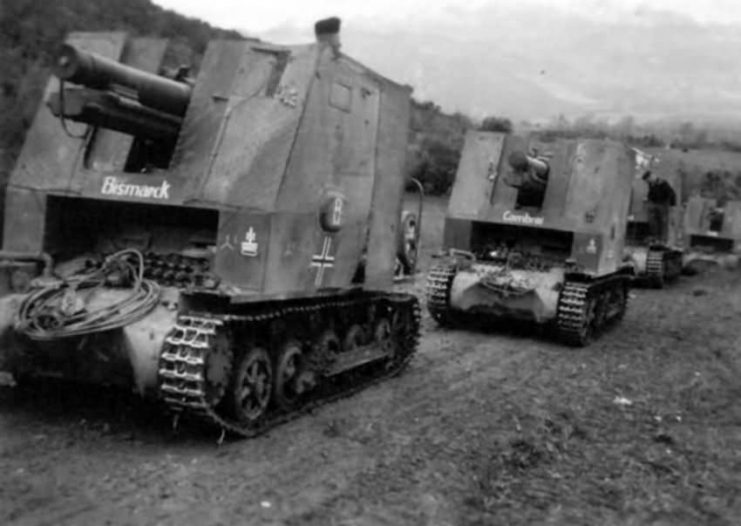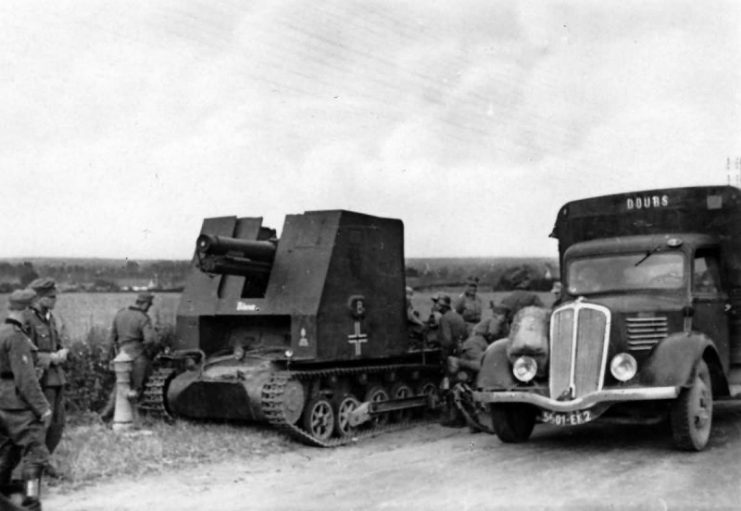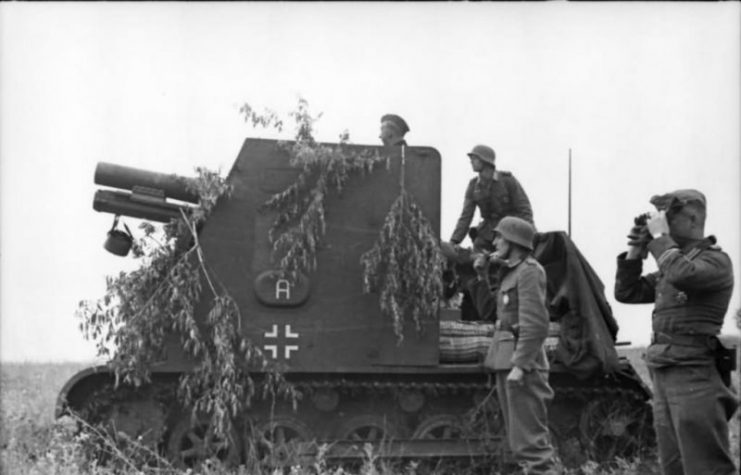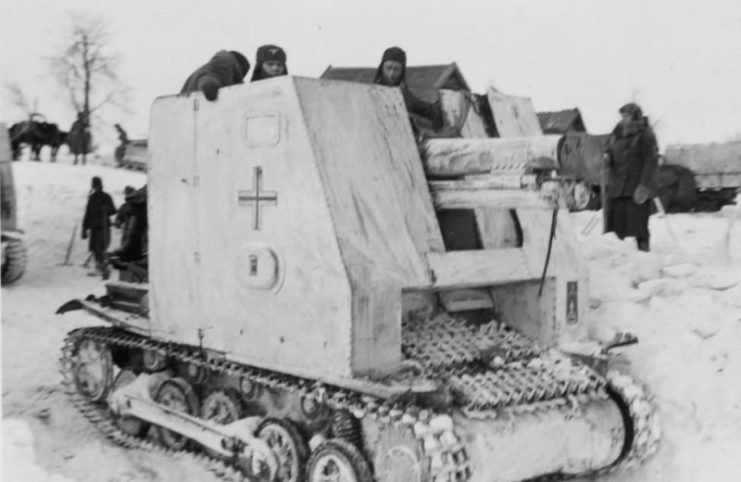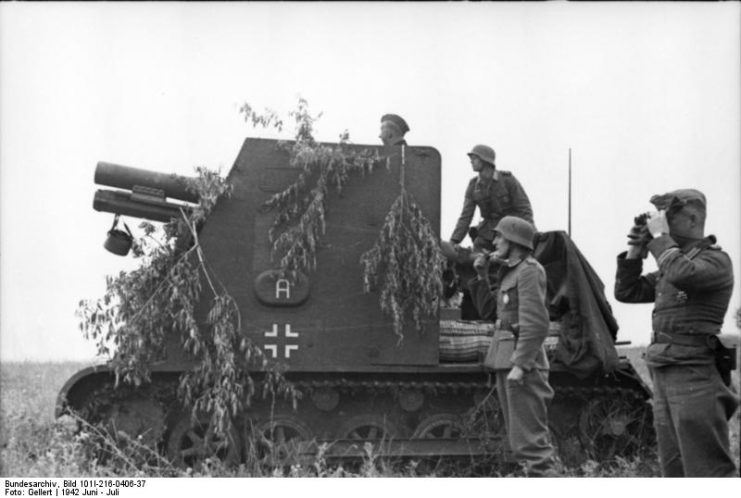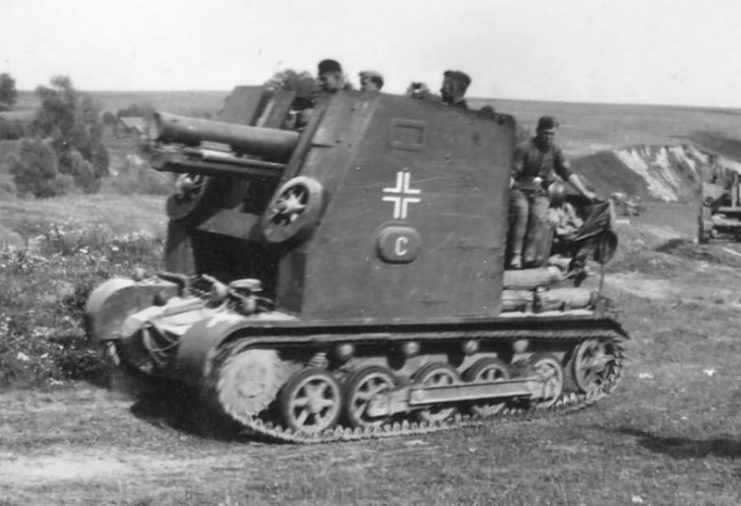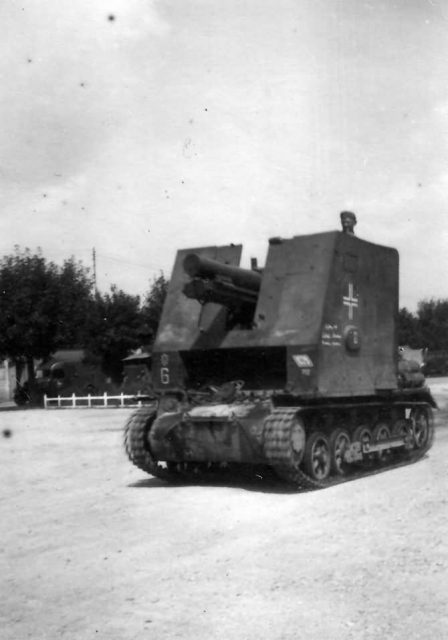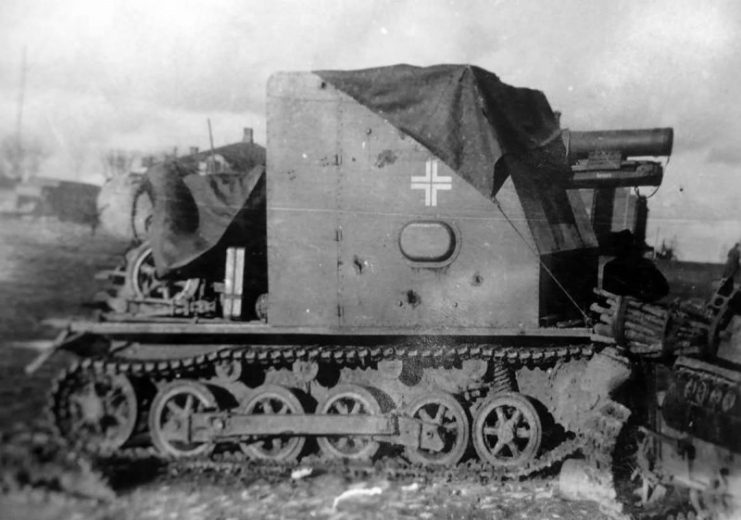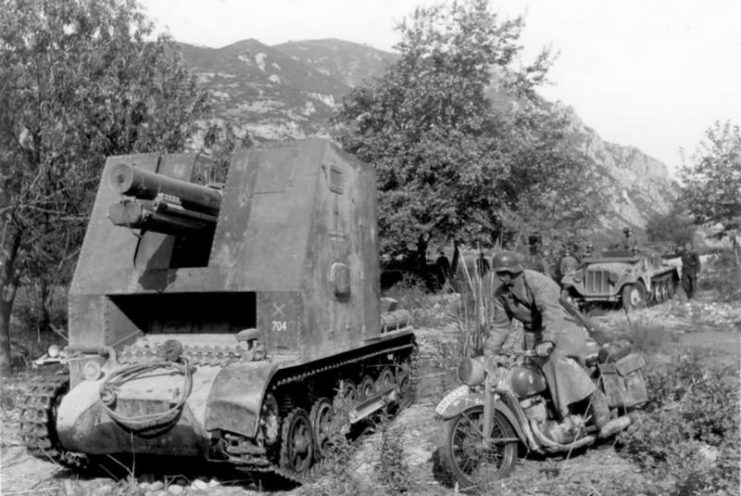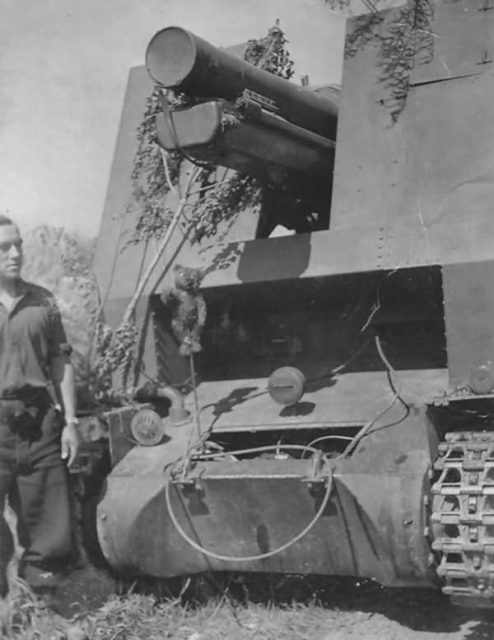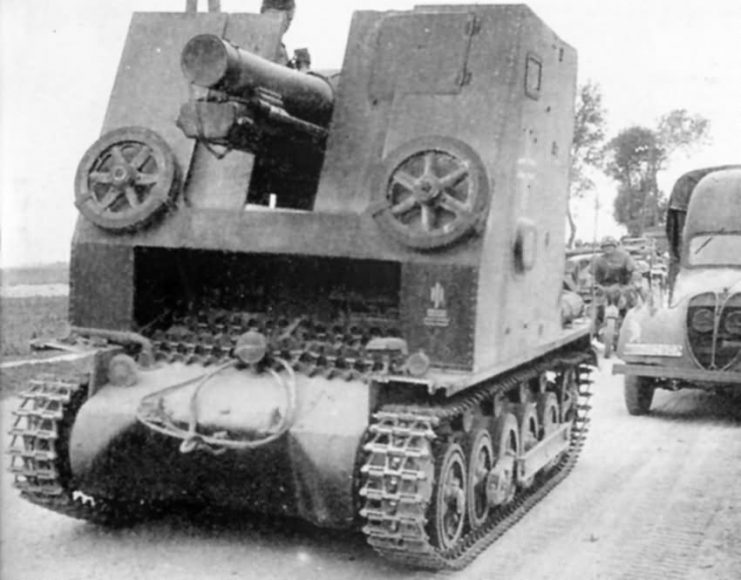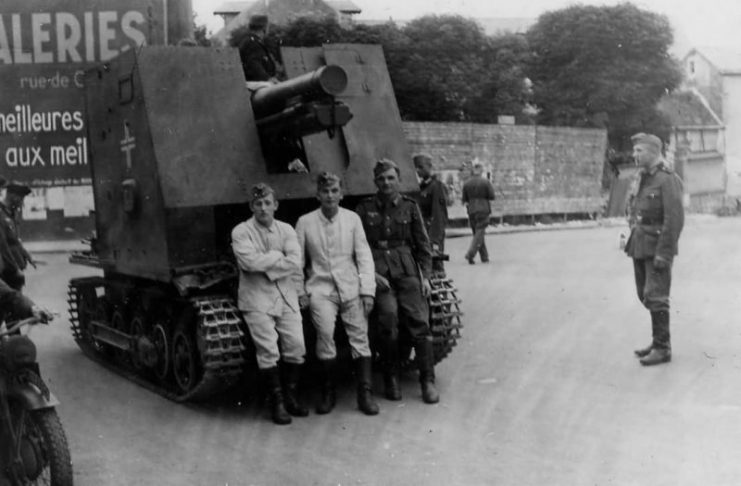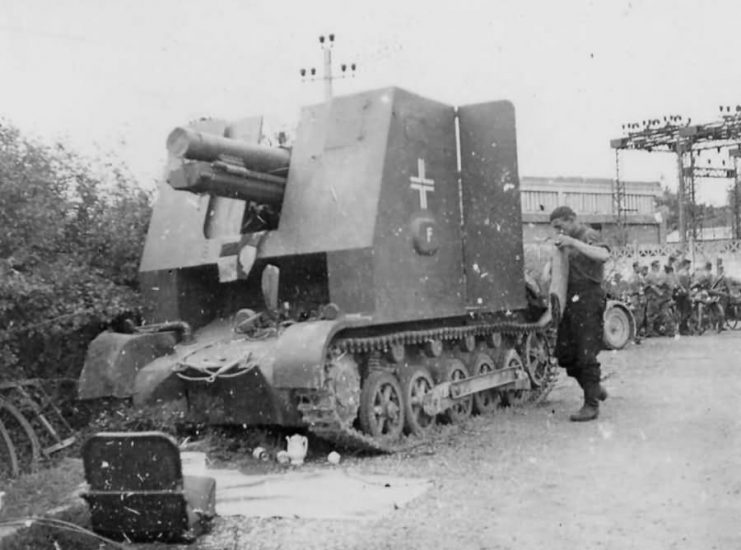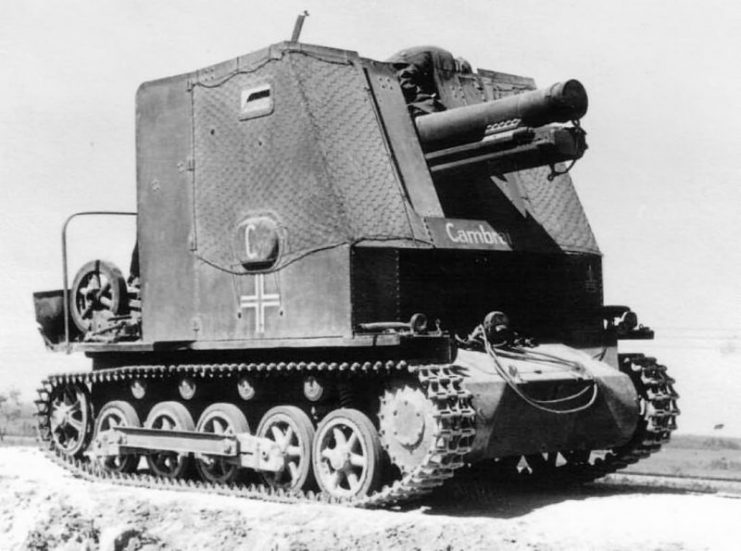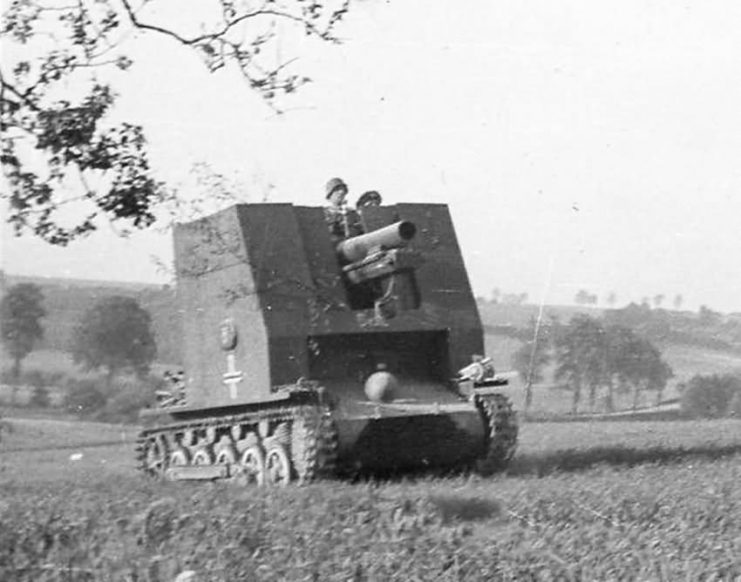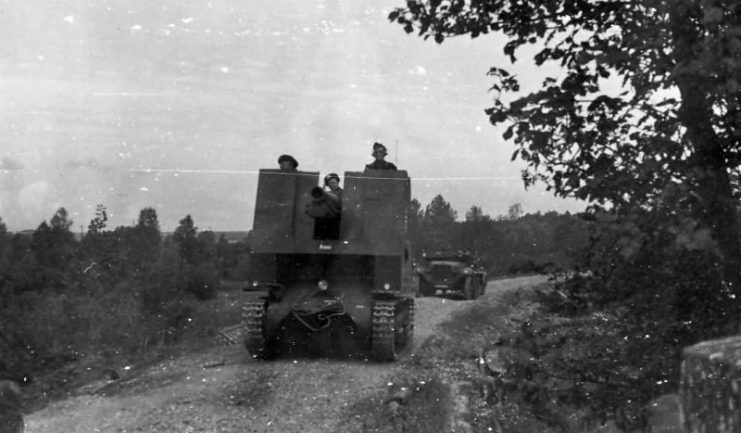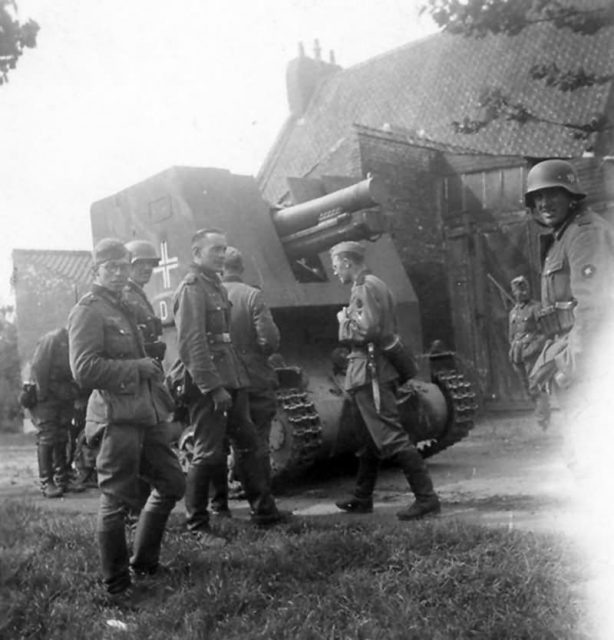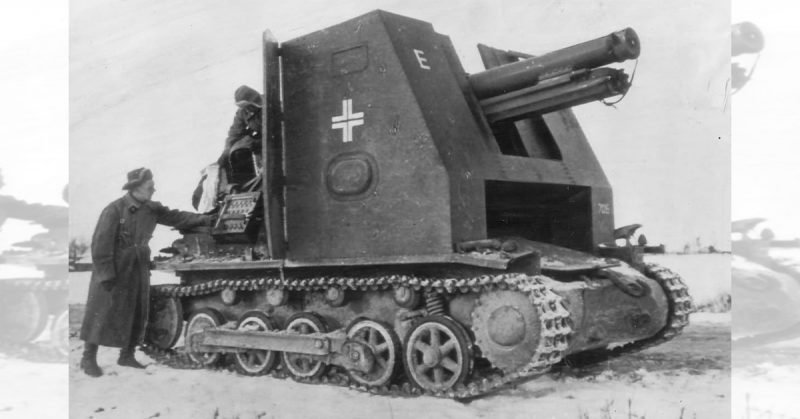When Poland signed the capitulation act on October 6th, 1939, the world stood still before the apparent military might of the Third Reich. It seemed as though the Poles, who had put up a fierce fight, never stood a chance against the then-cutting edge military tactics of the Wehrmacht.
But for the Germans, the Polish campaign had been the testing ground for what was yet to come. Having witnessed firsthand the necessity of artillery support during their swift offensives, the problem of mechanizing their artillery units arose.
So the idea of fitting a large artillery gun onto a tank chassis came as natural. This was how the Bison was conceived; a mobile artillery unit, capable of keeping up with tanks and motorized infantry, thus providing constant artillery support to advancing forces.
The design involved the chassis of the Panzer I, which was by then produced in mass numbers and was easy to come by. Also, the Panzer I became fairly outdated by late 1940, and spare parts were primarily used for self-propelled guns such as the Bison, or various tank destroyers.
Its main armament was the powerful 15 cm sIG 33 heavy infantry gun, at the time serving as the backbone of the Heer’s artillery units.
An armored superstructure mounted on the Panzer I chassis protected the gun from small arms and grenade shrapnel, but since it was open topped and its rearmost section was completely exposed, it offered little protection for the gunner.
The loader’s protection, on the other hand, was next-to-zero as they would often be exposed to small arms fire while performing their duty.
The 15 cm sIG 33 was a fairly large gun, which demanded much space to be effectively covered by armor. The size of the gun also denied any room for ammunition, so another vehicle had to be employed at all times for carrying the shells.
Even though its rather clumsy design left very little room for ammo and the crew, when it came to flaws and malfunction, space was plenty.
Due to the robust superstructure, the chassis was overloaded and prone to breakdowns. Also, the high silhouette of the vehicle made it an easy target, and the lack of an ammunition compartment led to many practical issues.
Nevertheless, the Bison served its purpose, most notably during the Battle of France in 1940 and the Invasion of Greece in 1941. By 1943, it was already an antique, while facing the dynamic development of armored fighting vehicles on the Eastern Front.
